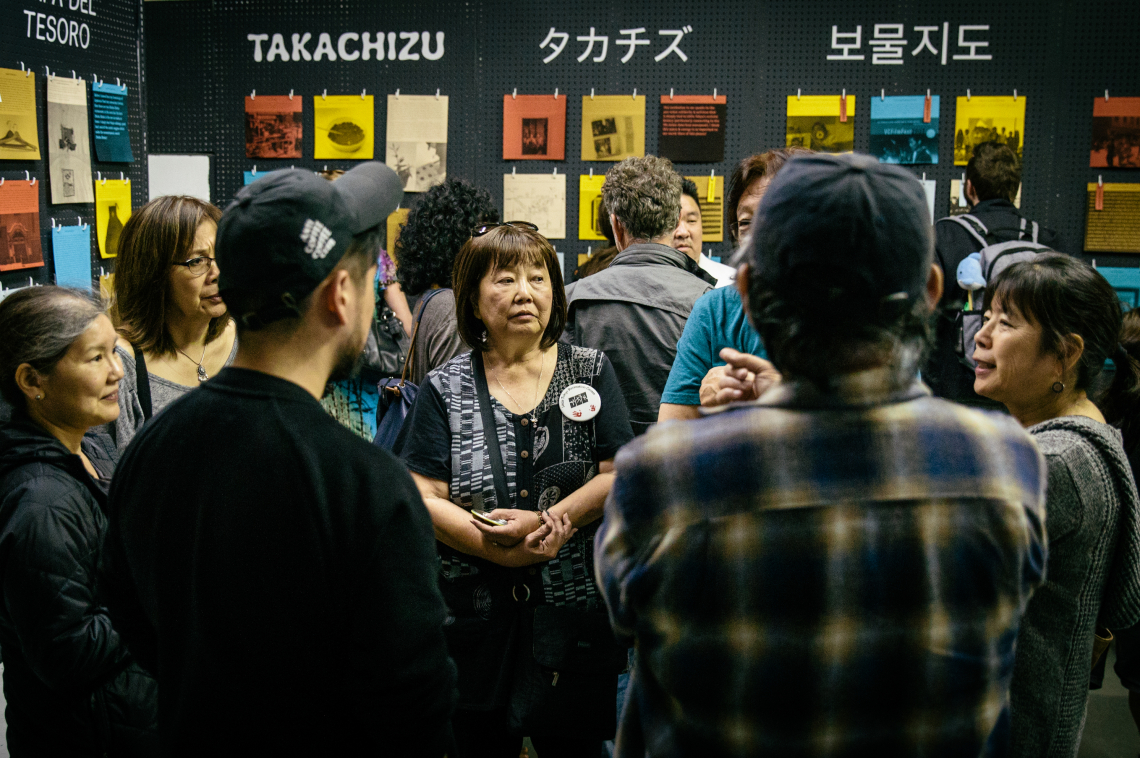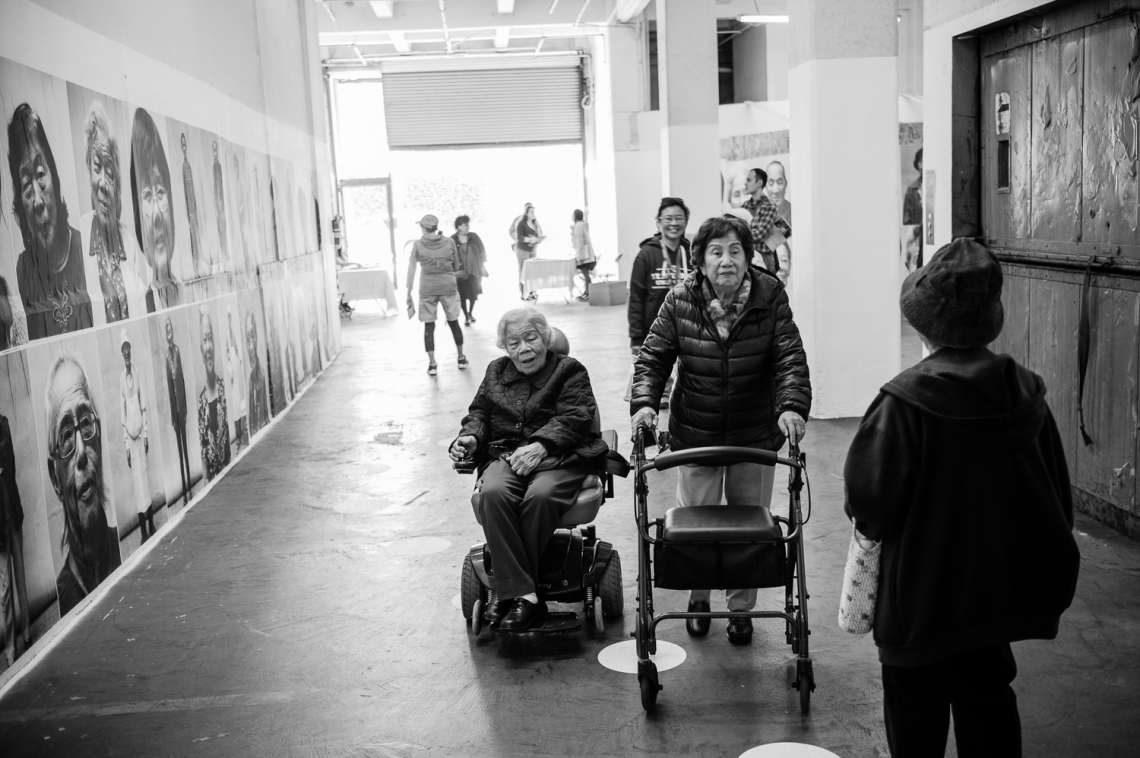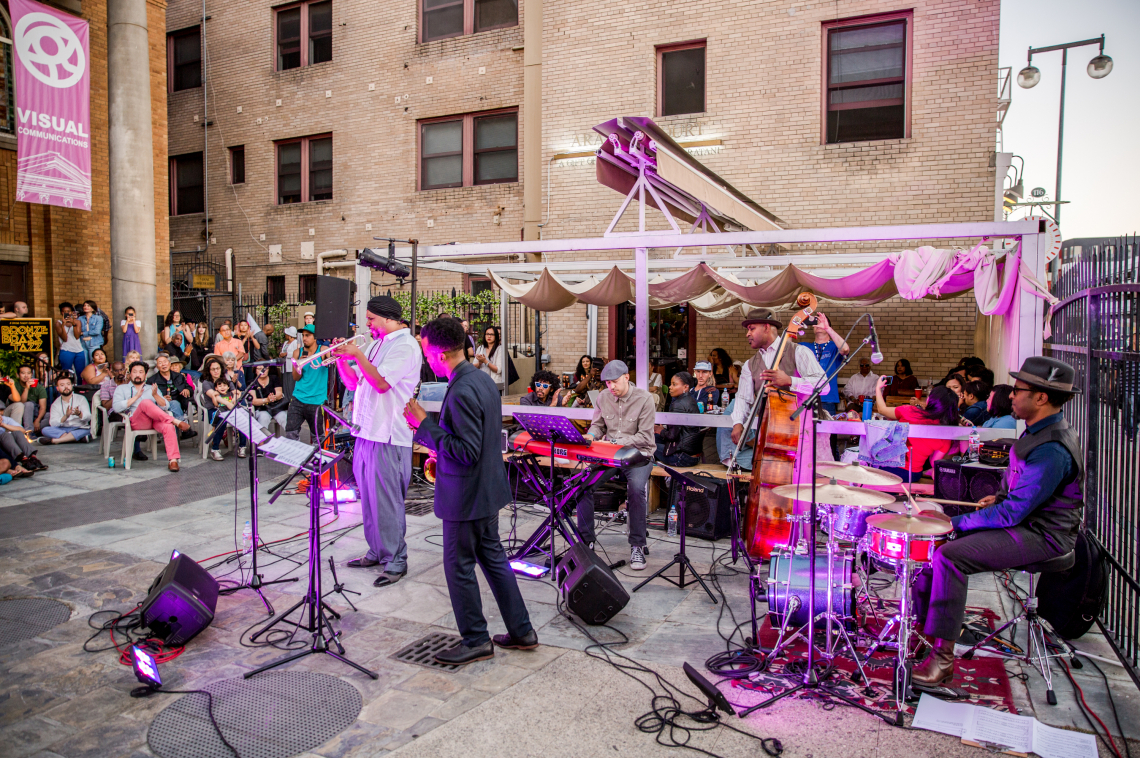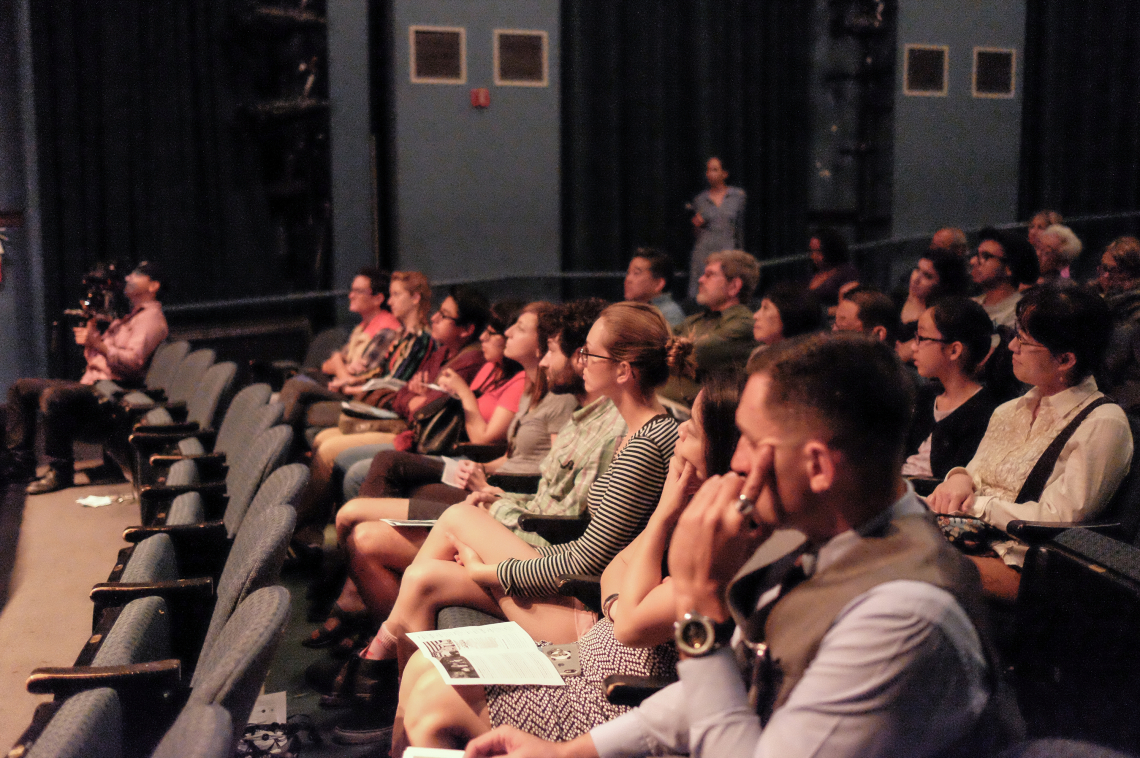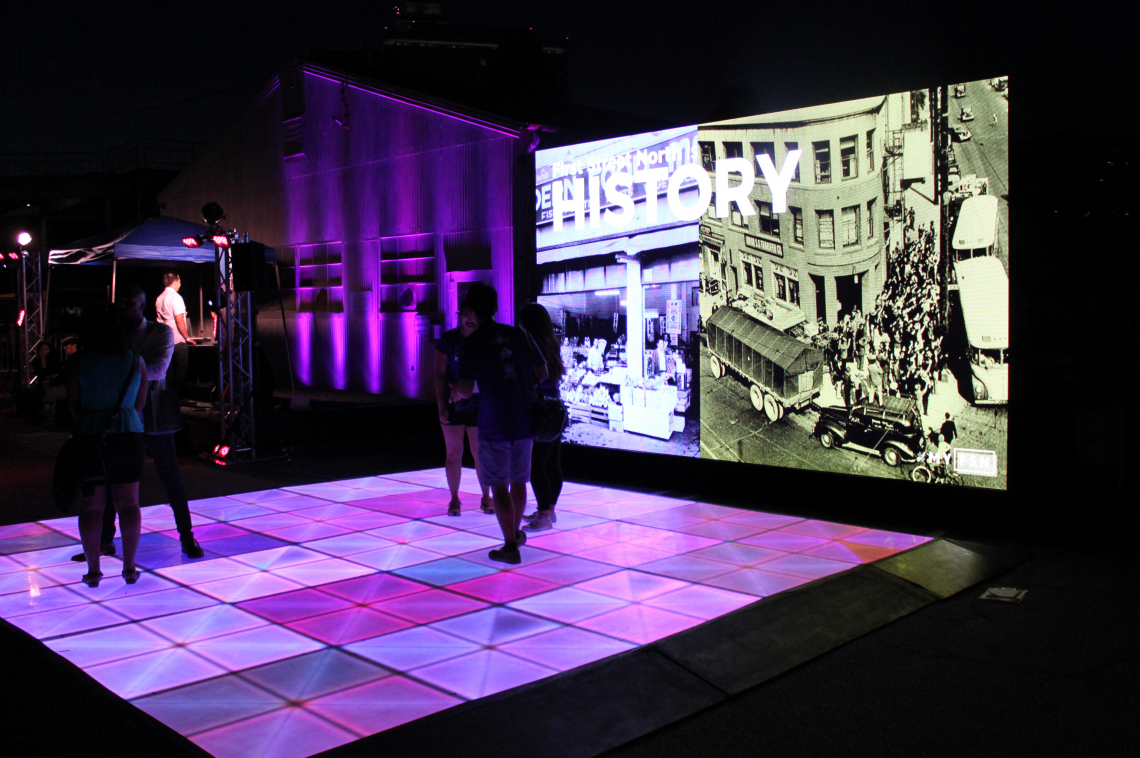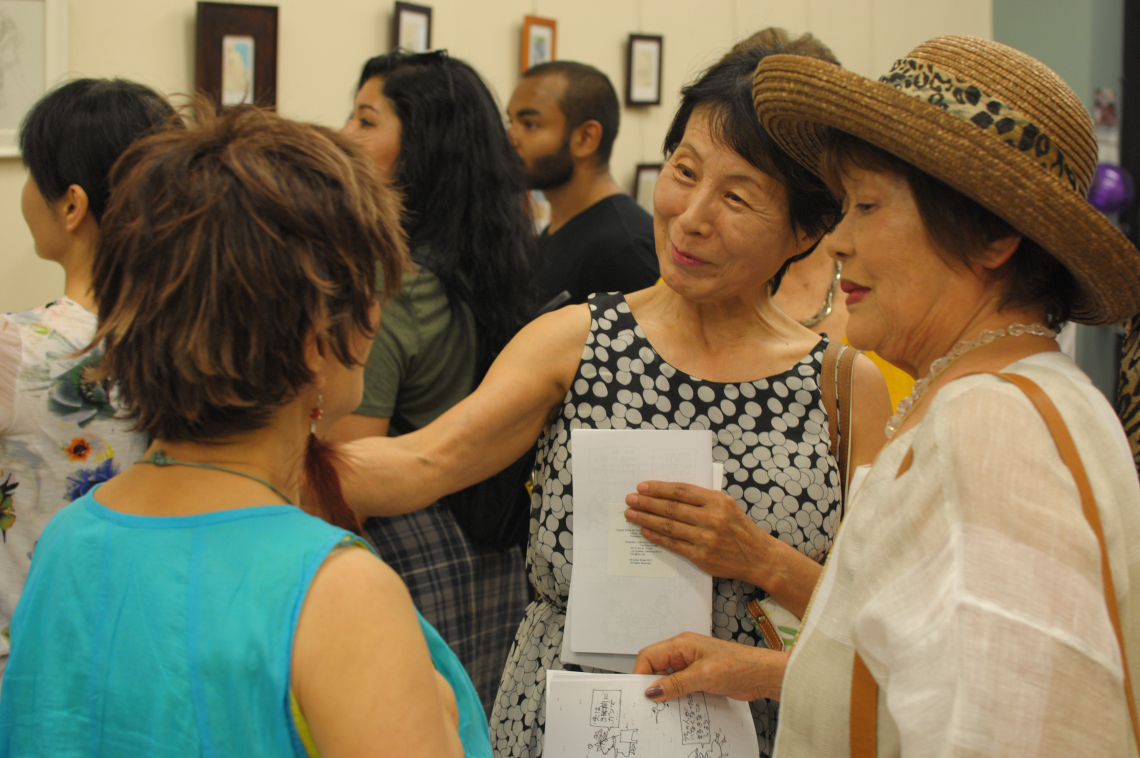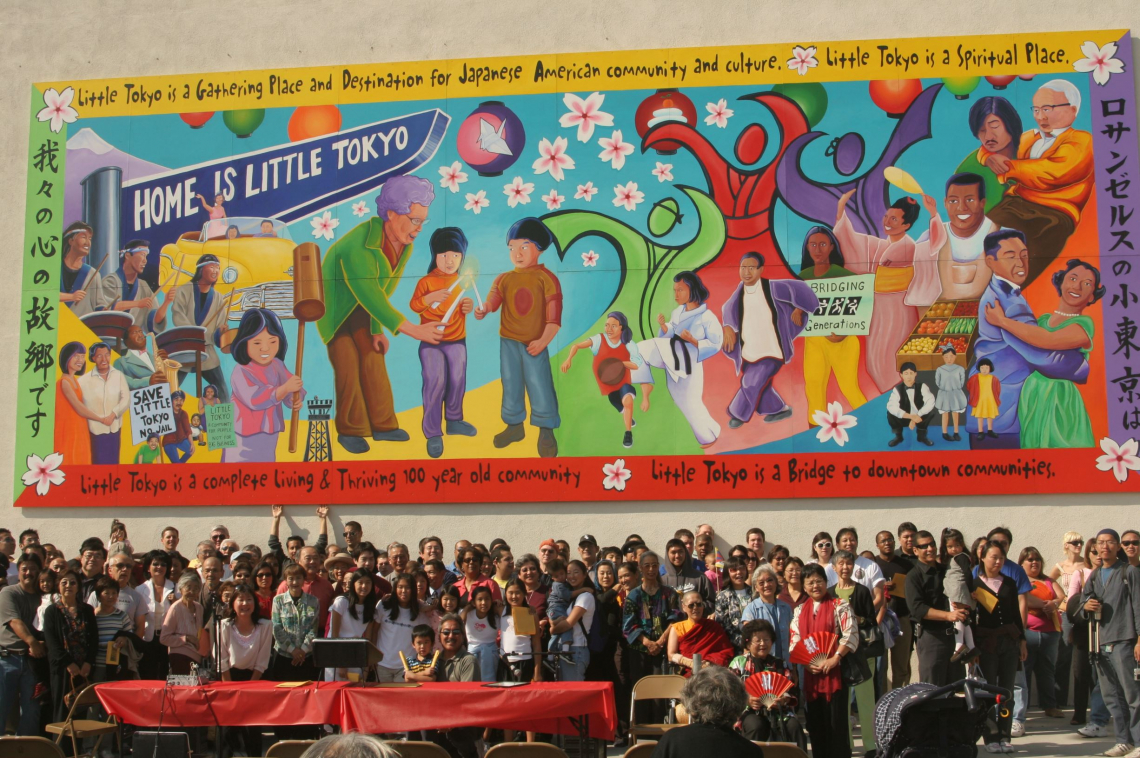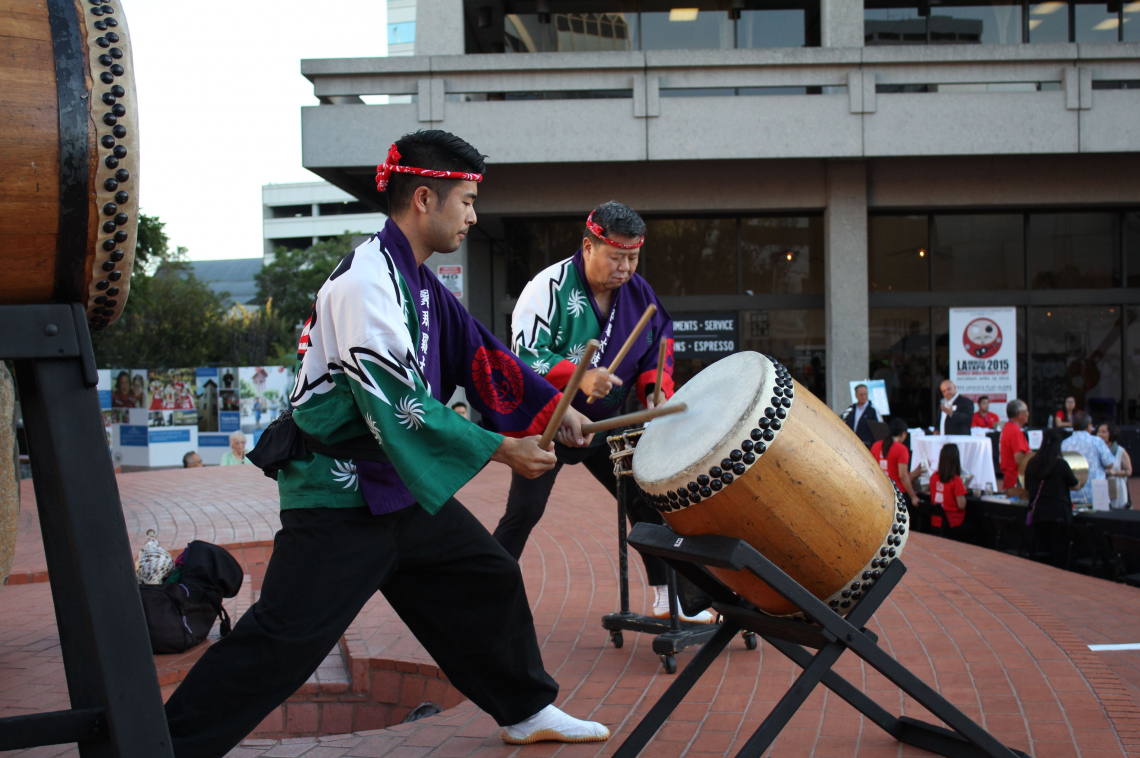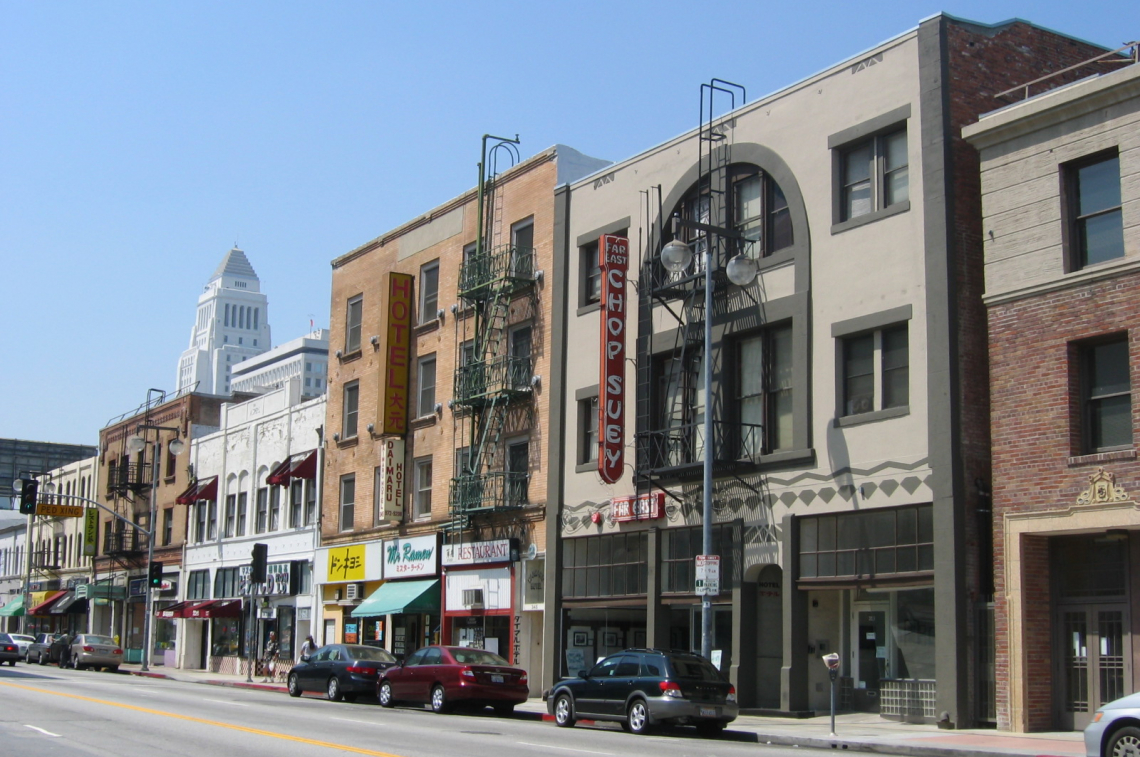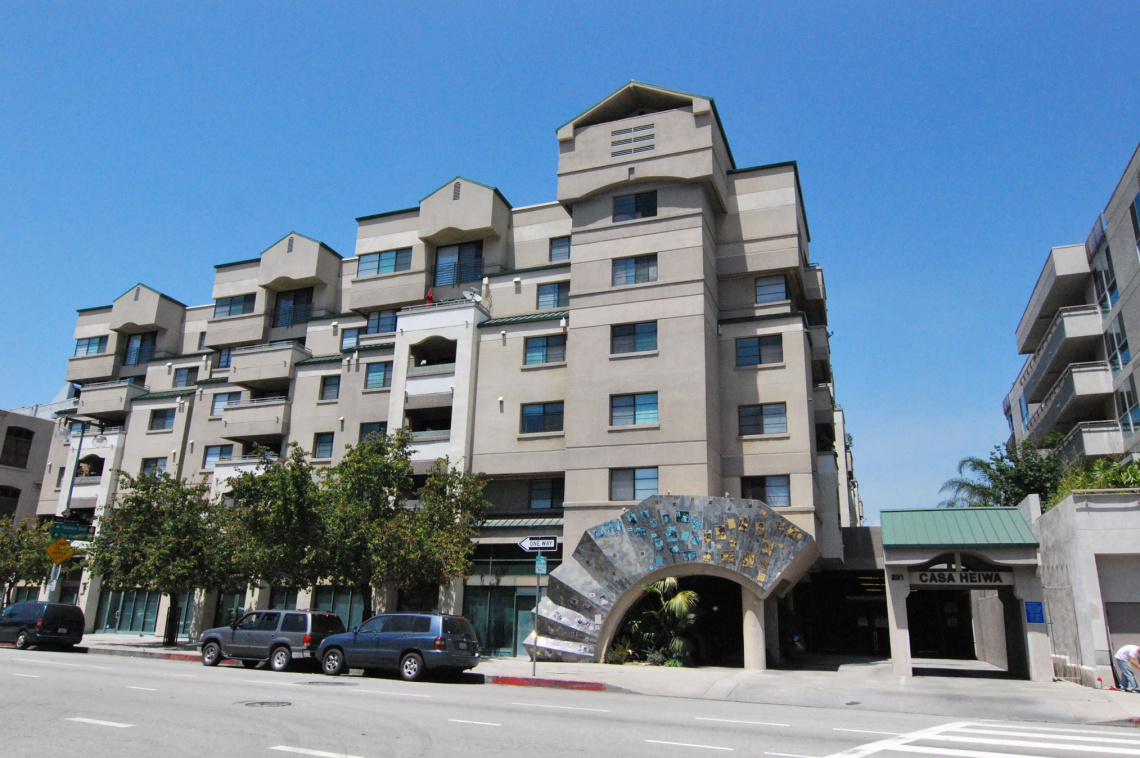This is one of six organizations participating in the Community Development Investments (CDI) program. For more information about the program itself, click here.
Little Tokyo Service Center (LTSC) was established in 1979 to provide linguistically appropriate and culturally sensitive social services for the Little Tokyo neighborhood of Los Angeles, CA and the Japanese American community.
LTSC’s most recent response to changes and challenges currently facing Little Tokyo has been to explore the ability of creative strategies to amplify our work.
Use the tabs above to read more!
Little Tokyo Service Center (LTSC) was established in 1979 to provide linguistically appropriate and culturally sensitive social services for the Little Tokyo neighborhood of Los Angeles, CA and the Japanese American community. Responding to the changes and challenges facing Little Tokyo over the years, LTSC has grown in size, scope, and breadth, including the establishment of a community development arm of the organization.
Today LTSC has over 100 paid staff. Our major areas of work include real estate development, social services, children & family services, tenant services, and community organizing & planning. To date, LTSC has developed over 800 units of affordable housing and 125,000 square feet of community commercial space in 27 properties and with 15 community partners. Every year, LTSC serves 10,000 clients - including Japanese-Americans and other Asian and Pacific Islanders in Los Angeles and Orange Counties, as well as residents of all ethnic backgrounds in Little Tokyo and surrounding areas of Central and Downtown LA.
LTSC’s most recent response to changes and challenges currently facing Little Tokyo has been to explore the ability of creative strategies to amplify our work. Recognizing the limitations of traditional community development approaches, LTSC evolved to incorporate arts and culture into its ongoing work by developing creative strategies to enhance the effectiveness of our efforts. This significant shift in organizational approach marks a vision that includes deeper collaborative work with local organizations. This vision is based in the belief that harnessing the breadth of abilities of artists and cultural practitioners will further empower the Little Tokyo community and accelerate our work towards the community’s vision for the neighborhood.
~
LTSC hosted a community forum to kick-off the CDI program in October 2015. Click here to view the program from the event and you can watch the video below.
Established in 1884, Little Tokyo is Los Angeles’ second oldest neighborhood and the largest of four remaining Japantowns in the United States. Little Tokyo has evolved into a hub for Japanese American culture where traditional cultural producers, contemporary artists, religious practitioners, activists, and community developers are using art to advance their mission, work together in a diverse socio-cultural ecosystem.
Throughout its history, the neighborhood has survived waves of displacement that threatened its very existence. Those included the forced removal and incarceration of people of Japanese descent during World War II and the demolition of whole tracts of housing, businesses, churches, and temples that occurred during the city’s urban renewal and Civic Center expansion of the 1950s through 1970s. Most recently, the market rate housing boom in Downtown LA has made the neighborhood less accessible to people of all but the highest incomes. Commercial rents have also risen, forcing out longtime small business owners.
Due its history of racism and external pressures, Little Tokyo has developed a tradition of grassroots organizing. Arts and culture has always been central to that tradition. From Toyo Miyatake’s surreptitious photography of the internment camps to the community’s creation of artistic and cultural institutions, Little Tokyo has long fought to establish and preserve spaces in which to document and express its own experience. Today, stakeholders are using creative placemaking strategies to increase the effectiveness of community development work -- and to fight for a version of Little Tokyo that is consistent with their vision.
Last Updated: January 2018
Little Tokyo and other ethnic enclaves across the nation are experiencing displacement and cultural erasure. Working with arts and culture is a response to the limitations of LTSC’s current approaches to addressing those challenges - leveraging Little Tokyo’s legacy of arts and cultural activity to maximize our ability to build and sustain community.
Art reaches across borders, connects people from all backgrounds, and conveys information in a way that is understandable, memorable, and provocative. Integrating art and community development creates opportunities for empowering communities, increasing accessibility for residents and visitors, and sustaining the core identity of culturally and historically important neighborhoods.
LTSC has embarked on a series of arts and culture based projects through a new initiative called +LAB which emphasizes community-focused experimentation and collaboration. +LAB connects with partners and collaborators in Little Tokyo to identify areas of concern for the neighborhood and develop creative solutions to these problems. +LAB staff, who are a sub-set of LTSC’s community planning and organizing team, work with artists as key partners in designing creative strategies, engaging them in each project to ensure optimal engagement and effectiveness.
Through these collaborations and partnerships, +LAB has completed projects that have advanced our community development goals. During these processes, we have learned the importance of involving artists, collaborators, and partners early in the process to ensure that arts and culture are integrative rather than additive. One key example of these partnerships is Sustainable LIttle Tokyo (SLT). SLT is a coalition of community institutions in Little Tokyo, of which LTSC plays a lead role. In 2013, with input from more than 200 community members, SLT developed a plan that reflects the community’s aspirations around equity, affordability, transit, arts, culture, environmentalism, commerce, and growth. The goals in this plan are to create a framework for creative placemaking work, and consequently are also the backbone for much of LTSC’s local partnership work.
The first challenge we sought to address was in partnership with SLT and focused on preserving and elevating treasures of Little Tokyo as identified by community members. In the face of gentrification, it was deemed imperative to capture as much of the essence of this historic cultural neighborhood as effectively as possible.
Takachizu
Takachizu, derived from the Japanese words takara (treasure) + chizu (map), is a community asset mapping project that identifies and reflects on that which is most valuable, celebrated, and in need of protection in Little Tokyo. Community members were invited to share items of historical and personal significance to add to an evolving temporary exhibition. The project lives on in the form of zines on topics ranging from the history of First Street North to ghost stories about Little Tokyo and an online archive http://www.takachizu.org/. The project was housed at the future site of the Terasaki Budokan, a sports and recreation center in Little Tokyo slated to open in Fall 2019.
Senior Portraits
Prior to the launch of Takazchizu, the +LAB team was invited to add an artistic element to the “Senior Appreciation Day” event. What began as a simple photography project blossomed into a local exhibit and moved into a larger collaboration.
In honor of Senior Appreciation Day, +LAB collaborated with LTSC’s Social Services and Community Organizing departments as well as Las Fotos Project, a non-profit, community-based photography program whose mission is to bring about positive change for teenage girls facing adversity, to interview and photograph seniors living in Little Tokyo. These portraits were exhibited as part of the Takachizu project and featured as part of local radio station KCRW’s “Going Gray in LA” series, which maps stories of aging through an 18-mile stretch of working class neighborhoods in East and South Los Angeles. The photos continue to be sought after for use in community outreach and campaigns.
First Street North (FSN)
#MyFSN is a neighborhood campaign that celebrates the only historically preserved block in Little Tokyo through community-based arts, awareness and engagement. The campaign highlights how the First Street North (FSN) block is critical to the past and future of the neighborhood, while promoting a community vision for FSN. The overarching goal of FSN related projects are to urge the city of Los Angeles to ensure the block is developed in way that is consistent with the community’s vision.
Poster Contest
+LAB and FSN stakeholders organized a poster contest where artists had the opportunity to craft a design that displayed FSN history, advocacy or activism as it pertains to the block, and/or a vision for the future of the block. Posters were placed in storefronts along First Street North enabling those who frequent the block to learn about the block on which they are shopping, walking, living, or eating. The contest was open to visual artists and poster design workshops were held with local residents to give them an opportunity to submit. The contest resulted in a diverse set of submissions and submitters including residents, long-time community members, activists, and artists not known in the community.
Launch Projects
+LAB provided support to three established cultural organizations in Little Tokyo - East West Players (EWP), Japanese American National Museum (JANM), and Visual Communications (VC) - to pursue projects activating First Street North. All programming served as remembrance of the 75th anniversary of Executive Order 9066, signed by President Franklin D. Roosevelt in 1942 permitting the Secretary of War to prescribe military areas which initiated the unjust incarceration of Japanese, German, and Italian Americans to internment camps. EWP invited local residents and schoolchildren to attend free performances of “Residence Elsewhere” while JANM executed “Moving Day,” an outdoor public art installation of Executive Orders and series of public programs. VC recreated Bronzeville, Little Tokyo through performance, virtual reality and projection mapping technologies. Bronzeville was a period during World War II, after the forced removal of Japanese Americans, where the was a significant influx of primarily Black Americans who made Little Tokyo their home.
Sake Festival
+LAB also contributed to LTSC’s 11th Annual Sake and Food Tasting event, held on July 21, 2017. The event was entitled “Sake at First Street North, Little Tokyo,” and drew attention to the #MyFSN campaign through a multimedia installation, designed to inspire guests to re-imagine the First Street North block. This project was our first extensive internal collaboration and allowed us to build interdepartmental relationships.
Placemats
+LAB encouraged artists and businesses to become involved in community development efforts through the creation of four unique placemats highlighting the history and importance of First Street North. Each placemat was interactive, inviting restaurant patrons to photograph their food or create origami. These placemats were designed by local artists and distributed to businesses along First Street North as well as the wider Little Tokyo small business community.
Artist-In-Residence
Selected California artists (including at least one artist from the Little Tokyo community) from multiple disciplines will collaborate with local arts organizations to create artworks and projects promoting community engagement and creative placemaking strategies around the broad theme of “Community Control and Self Determination.” The selected visiting artists will be hosted by local arts organizations; participating organizations include the Japanese American Cultural & Community Center, the Japanese American National Museum, Sustainable Little Tokyo, and Visual Communications. Integrating art and community development in this residency provides the opportunity to empower Little Tokyo, increasing accessibility, and sustain the core identity of this culturally and historically important neighborhood.
LTSC Arts Integration
This project aims to integrate creative strategies into LTSC’s everyday work. In addition to designing arts experiences for staff, the +LAB team is also co-creating projects with artists and departments to address a challenge of their choice. Through interdepartmental collaboration, +LAB aims to increase organizational cohesion and strengthen internal goals through innovative arts-based strategies and solutions. in addition to developing creative strategies it is vital to also support and bolster existing ideas and projects among staff that include arts and culture as part of the process to achieve a departmental goal.






